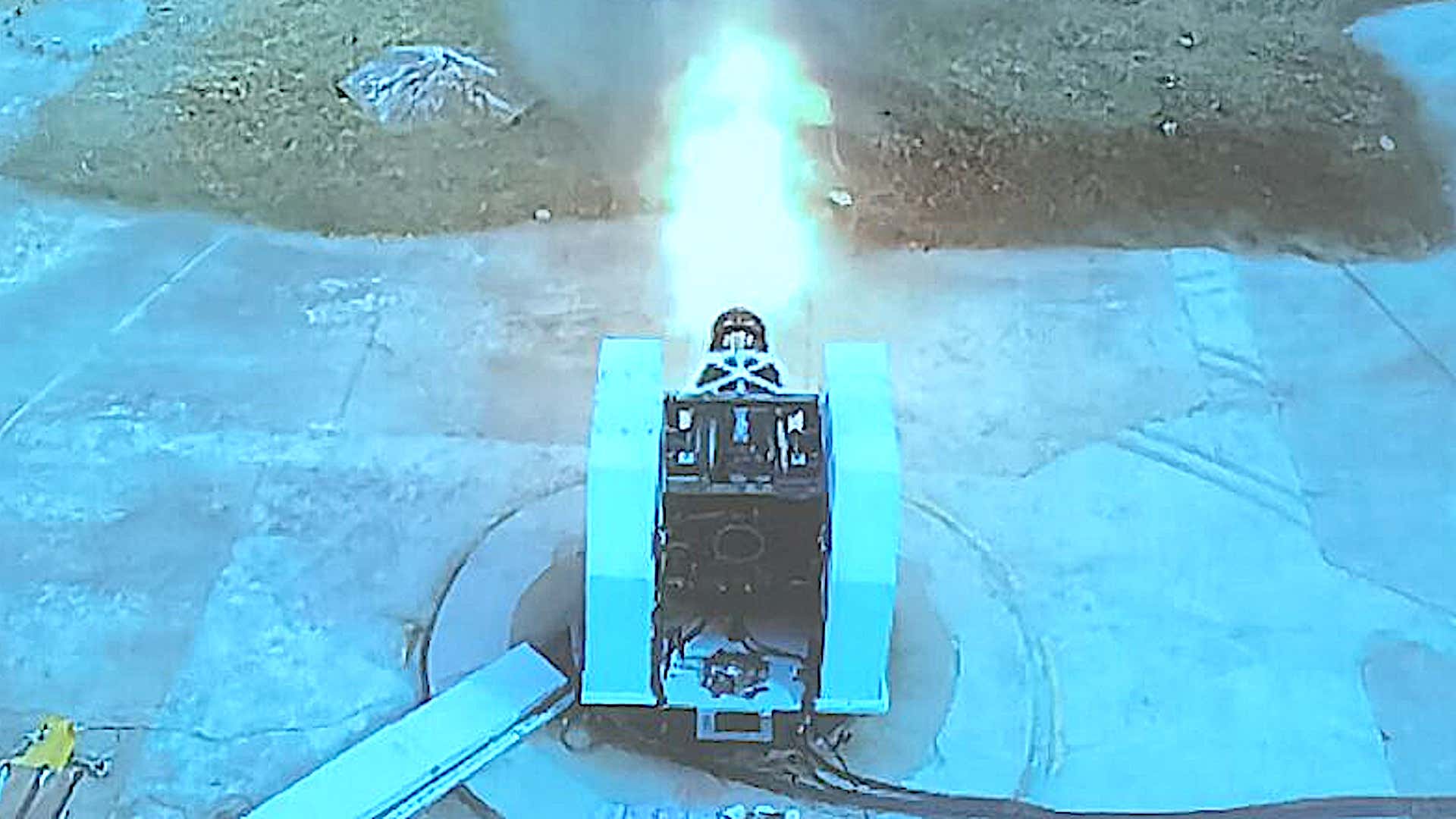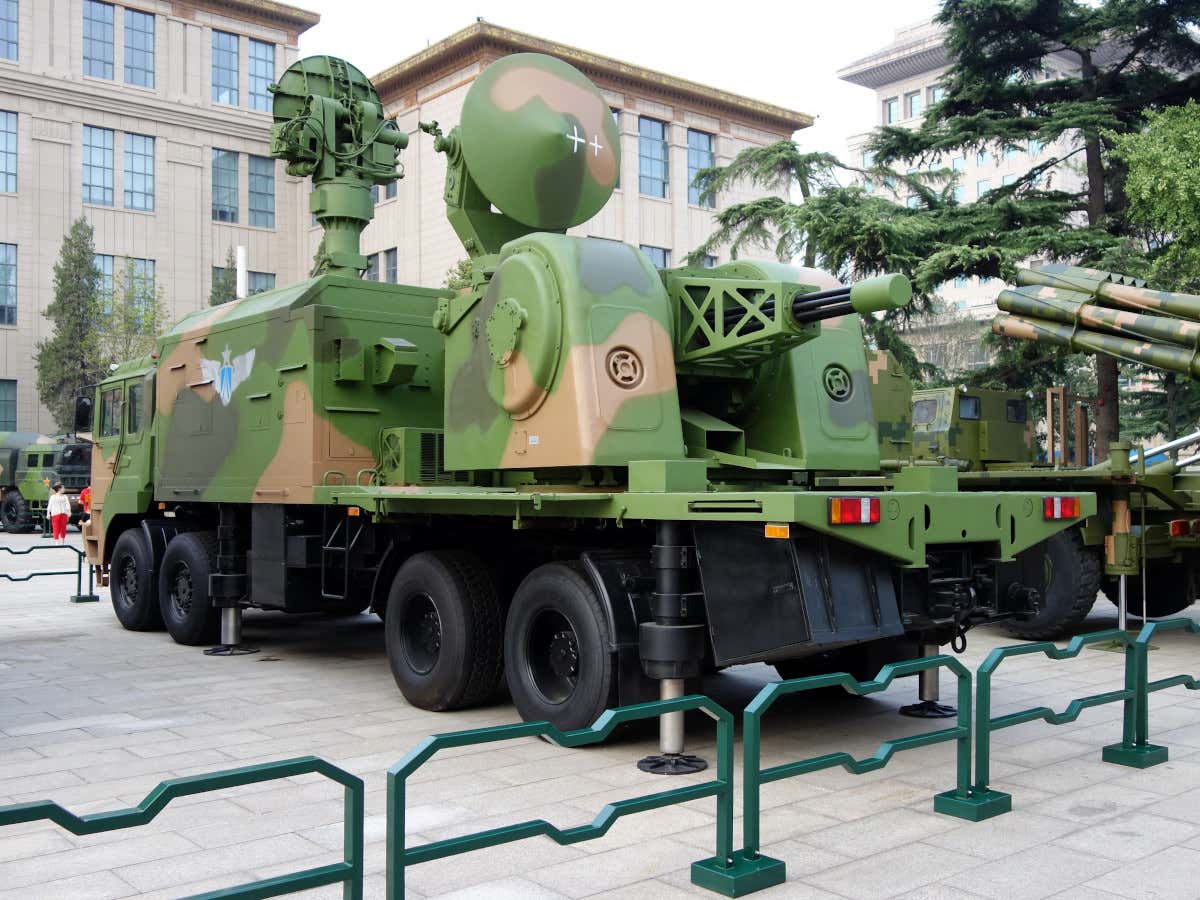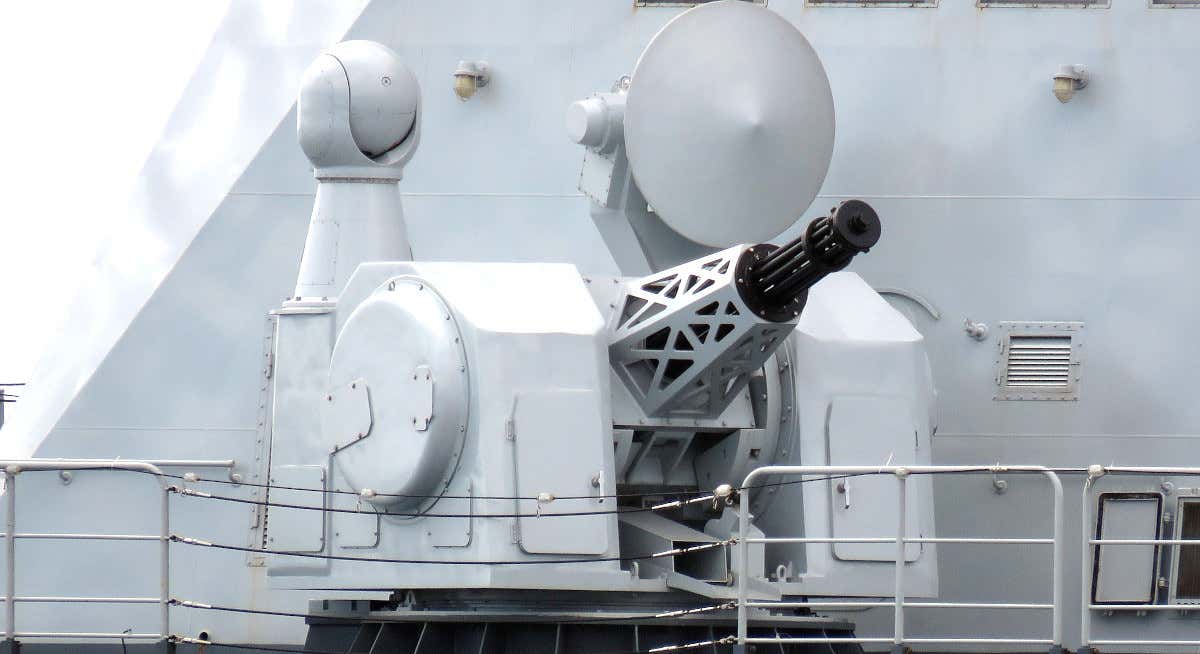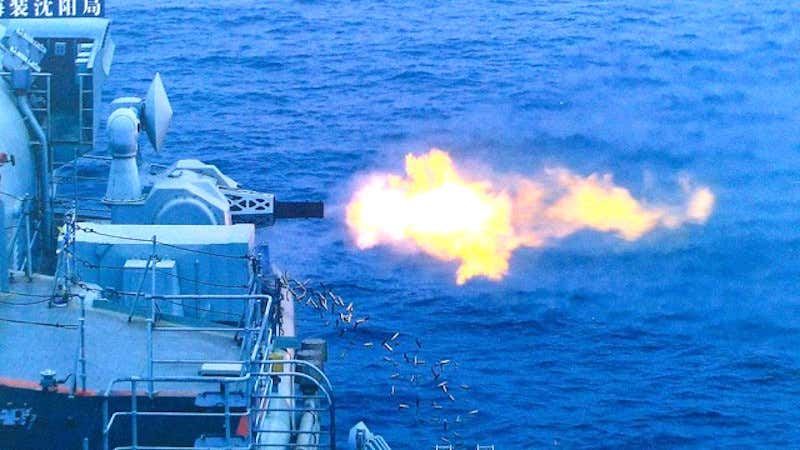Has anybody received updates on the status of the 20-barrel CIWS under development? This is a real monster!
The new weapon has nearly twice as many barrels as the largest close-in weapon system in service now with China's Navy.
BY
MAY 20, 2021
Pictures have emerged online that indicate testing of a new and absolutely fearsome-looking naval point air and missile defense system has been going on in China since January. The available images show that this weapon system notably features a
with a whopping 20 barrels, nearly twice as many the largest close-in weapon system, or CIWS, now in service with the People's Liberation Army Navy, or PLAN.
The pictures, which first emerged on Chinese micro-blogging site Weibo and are now circulating on social media, indicate that this system has already undergone at least three rounds of live-fire tests, in January, March, and April of this year. It is unclear what entities might be involved in the design of this weapon and whether it is expected to lead to an operational system or is simply a proof of concept.
An image showing an apparent test of a 20-barrel Gatling-type naval close-in weapon system.
It's also not clear what the caliber of weapon is, what kind of rate of fire it might be intended to achieve, and how fast it has been able to fire. Gatling-type weapons, in general, are well known for their extremely high rates of fire compared to single-barrel guns or even other multi-barrel designs.
The mounting the weapon is seen sitting in fits with the general shape and construction of other naval close-in weapon systems (CIWS), which are installed on warships as a last line of defense, primarily against incoming missiles. China already has two domestic CIWS designs that use Gatling-style weapons, the Type 730, and its associated variants, and the Type 1130. The Type 730 features a seven-barrel 30mm Gatling-style cannon, while the Type 1130, first seen on China's first aircraft carrier, the Liaoning, and now present on other Chinese warships, is another 30mm design with 11 barrels.
A Chinese LD-2000, which uses the same turret, seen the rear of the vehicle, as the Type 730 CIWS.
A Type 1130 CIWS installed on a Chinese Type 054A frigate.
It also worth noting that the Type 730 is at least very externally similar to the
CIWS, which uses a seven-barrel
, the same gun found on
ground-attack aircraft.
The Type 730 reportedly has an adjustable rate of rate fire, reportedly can, at maximum, spit out
. The Type 1130's maximum rate of fire is reported to be at
.
A Chinese Type 1130 CIWS in action.
Theoretically, with Gatling-type guns, the rate of fire is mainly determined just by how fast the barrels spin. The iconic American
, with its six barrels, is typically set to fire at either 4,000 or 6,000 rounds per minute, but has fired faster during testing. The Phalanx CIWS, which the U.S. Navy,
, use, and which is in service in its
with the U.S. Army, uses a variant of the Vulcan.
Compared especially to single-barrel designs, Gatling-style weapons do have the inherent benefit of being able to distribute heat build-up and other wear and tear among their multiple barrels. At the same time, they can still overheat and be fired to the point of destruction.
As is evidenced by the reported rate of fire on the Chinese Type 1130 CIWS as compared to the Type 730, adding additional barrels can present one pathway to safely increasing how many rounds per minute a gun of this type can shoot. So, this new 20-barrel weapon could very well be able to operate reliably at a maximum rate of fire thousands of rounds per minute higher than even that of the Type 1130.
This would be an alternative to other methods of increasing the immediate firepower for a CIWS, such as adding additional guns. That is a route that the Russians, and the Soviets before them, have taken, most recently in the form of
, which blends elements of
with portions of
ground-based point air defense system. Pantsir-ME, like Kashtan, has two GSh-30K six-barrel 30mm rotary cannons, each with a maximum rate of fire between 9,000 and 10,000 rounds-per-minute, but also adds eight surface-to-air missiles. Kashtan is in service in China on various warships, as well.
As China's People's Liberation Army Navy (PLAN) continues to expand the size and capabilities of its surface fleets, including with the addition of larger, more advanced vessels, including
and
, the demand for more capable CIWSs is only likely to grow. This has already been evidenced by the addition of the new Type 1130 to the
Liaoning. Though the discussion is more commonly framed around the increasing threat that advanced Chinese, as well as Russian, anti-ship missiles, including longer-range and faster-flying
and
, present to other navies, the PLAN
the
.
A CIWS with a 20-barrel Gatling-type cannon with a very high rate of fire would, by definition, be able to put out more rounds, faster. This would be particularly valuable for engaging existing and future advanced anti-ship missiles, which are increasingly faster and
, features that could shrink the available engagement window for close-in defenses. At the same time, unless the magazine capacity is similarly increased, this weapon might only be capable of firing a small number of total bursts before needing to be reloaded.
So, while it remains to be seen if this particular 20-barrel design will make its way into operational service, it's hardly surprising that the PLAN is looking at bigger and badder CIWSs that can spew out shells at even more blistering rates of fire as new threats continue to emerge.
UPDATE, 7:35 PM EST:
George William Herbert, an independent expert on missiles and nuclear weapons, has noticed that the side view picture of this new Chinese CIWS firing appears to show two barrels, one at the 12 o'clock position and one at the six o'clock position, firing at once. It is possible that ammunition could be fed in, and then ejected, at two separate points to support this method of operation, which would further increase the gun's overall rate of fire.






